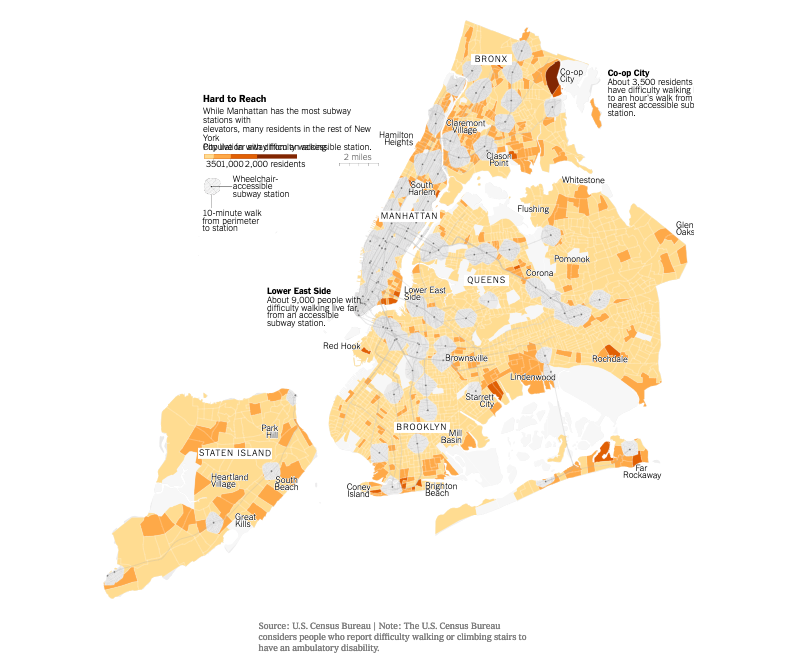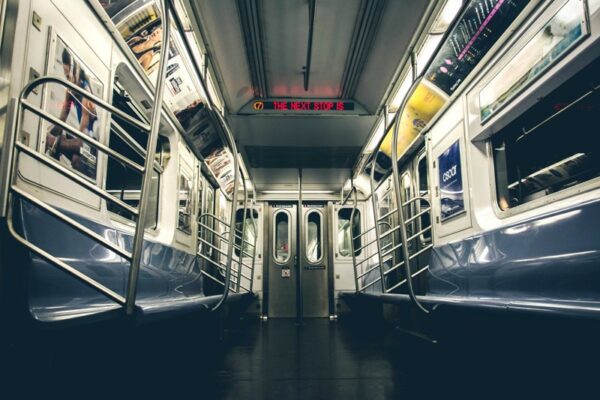The state of public transportation across major cities in America is in crisis. It’s either over-crowded or under-utilized service dependent on peak commuter hours. It’s a lack of funding and resources and massive delays in projects under construction. Big gaps in accessibility. These are some of the most commonly articulated challenges for both riders and advocates in public transportation.
A recent report found that American bus ridership fell by 5 percent between 2016 and 2017. The country’s seven largest transit systems—Boston, Chicago, Los Angeles, New York, Philadelphia, New York, and Washington, DC—all lost riders that year, too.
Right in our backyard, Philly is dealing with a lawsuit filed against the Pennsylvania Turnpike Commission that could have massive effects on SEPTA programs and plans which included: new trolleys and expanded rail service to suburban areas of Greater Philadelphia. The Philly Inquirer reports that “even if the suit is unsuccessful, the state faces a transit crisis. The turnpike is $11 billion in debt because of the borrowing it has done. In 2022, the $450 million yearly payments are scheduled to drop to $50 million.” Pennsylvania Transportation Secretary Leslie Richards pinpointed the solution that needs to happen on a broader scale: “The state needs dedicated revenue that grows with inflation, which would create a stable base from which to borrow for long term projects.”
Just under 100 miles away, New York City is home to the seventh busiest subway system in the world with over a billion riders annually. While it is heavily trafficked and relied upon daily, The New York Times recently shed light on the fact that it is highly inaccessible for those who really need it: people who have trouble walking. A New York Times analysis found, “in the city, there are 550,000 residents who have difficulty walking. Two-thirds of them live far from an accessible subway station.

They went on to report, “Only about a quarter of the 472 subway stations in the city have elevators — one of the lowest percentages of any major transit system in the world.” Susan Dooha, the executive director at the Center for Independence of the Disabled, New York, explains that “many people with disabilities do not walk distances because they cannot stand for a period of time, are fatigued, have pain when walking.” The alternatives and options (or lack thereof) for most people with disabilities is to rely on an inefficient bus system or the Access-A-Ride program, a paratransit service run by the city and the Metropolitan Transportation Authority that critics say is unreliable. The plan to install 50 new elevators around the city’s stations will roll out over the next 5 years. This will massively help improve the transportation experience for riders who have trouble walking. Still, we have more work to do, and more than we can do before that happens.
On the other side of the Hudson River, is New Jersey, the most densely populated state in America. New Jersey public transit (NJ Transit) is getting criticism on keeping up with rapidly growing senior and disabled transport needs in their paratransit programs. Advocates explain funding is down by half since 2008 and is tied to Atlantic City’s Casino Revenue Fund. When Atlantic City took a massive hit, some counties made up the difference but some didn’t. Advocates are asking for a much more stable funding source, similar to Pennsylvania. Michael Vieira, president of New Jersey Council on Special Transportation said, “New Jersey’s Human Services Community Transportation is in a serious financial crisis which is affecting every county, municipality and social service agency in the state.”
At the same time, New Jersey’s senior population keeps growing. AARP reported the 65+ cohort is expected to double by 2050 and will increase 12.2% percent for the state population. Experts recommended communities begin planning for public transit access around the aging communities.
The public transit and mobility issues are huge in these metropolitan areas in the Mid-Atlantic region of the East Coast but, the reality is that the problem is everywhere and it affects a great deal more than just mobility itself. San Francisco, Chicago, Denver, and San Diego are some key places with all-hands on deck trying to solve existing, catastrophic public transportation challenges. A study earlier this month done by CSU in Cleveland breaks down how better public transportation access leads to higher employment and lower poverty. ABC5 reported that assistant professor of public administration and policy, Obed Pasha, examined some of the street-level data as part of the research project.
Pasha’s research revealed, “that in areas that were previously unserved by public transit, property values increased by 3.5 percent within a decade of receiving some access to public transit. Those same areas also saw employment rise by 3 percent. Additionally, and perhaps most importantly, poverty levels declined 12.9 percent within a decade of receiving access to public transit.”
No matter what city you are in or what type of rider you are: reliable and affordable public transportation is greatly appreciated. Especially when mobility is already an everyday challenge, transportation needs to support –not detract from– everyday living and positive life experiences. Roundtrip at work in partnership with GRTC has shown us a vastly different before and after snapshot of paratransit options with on-demand, point-to-point services that are subsidized for its members. In the coming weeks, Roundtrip will be launching with a few more similar programs to offer more on-demand, reliable, affordable options for more riders.
